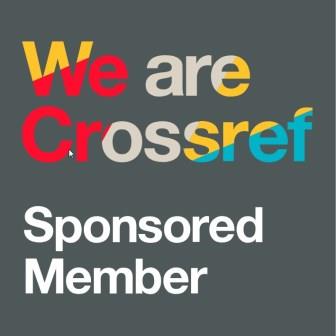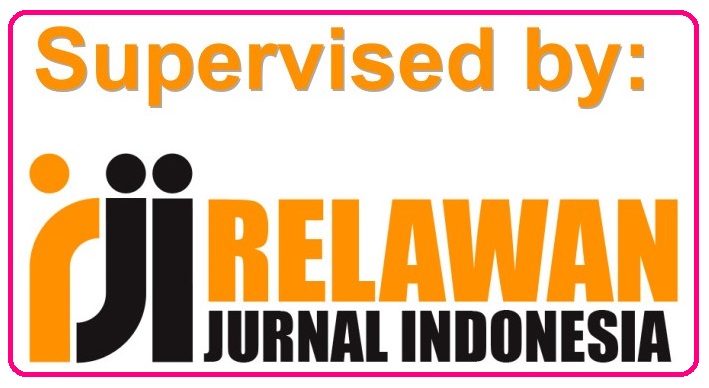The Four Roles of L1 in CLIL and Translanguaging: Negotiator, Mediator, Encourager, Facilitator
Abstract
The current landscape of English language teaching are moving from the monolingual assumption to the understanding that L1 is part of one person’s whole linguistic repertoire. However, this shift is still largely occurring in research while the practice of English teaching still largely considers L1 to be an unwanted interference. The potential role of L1 in making the input comprehensible should receive further consideration. This essay will discuss how language teachers should seek to leverage students’ L1-encoded prior knowledge rather than viewing it as an impediment within the context of Content and Language Integrated Learning (CLIL) and translanguaging because they both explicitly affirm the goal of multilingual competence and involve the use of L1 in teaching practices. The difference lies in terms of the attitudes; the use of L1 is not contemplated as a priori in CLIL yet encouraged in translanguaging. This essay highlights the need for balanced and flexible L1 use in their respective contexts and pedagogies in respect to its roles: (1) L1 can negotiate meaning for L2 learning objects, (2) L1 can address the negative transfer of false cognates, (3) L1 can encourage the engagement of multilingual resources, and (4) L1 can facilitate classroom engagement.
Downloads
References
Bransford, J., Derry, S., Berliner, D., Hammerness, K., & Beckett, K. L. (2005). Theories of learning and their roles in teaching. Preparing teachers for a changing world: What teachers should learn and be able to do, 40, 87.
Conteh, J. (2018). Translanguaging. ELT journal, 72(4), 445-447. https://doi.org/10.1093/elt/ccy034
Cummins, J. (2009). Multilingualism in the English‐language classroom: Pedagogical considerations. TESOL quarterly, 43(2), 317-321. https://doi.org/10.1002/j.1545-7249.2009.tb00171.x
Dalton-Puffer, C. (2011). Content-and-Language Integrated Learning: From Practice to Principles? Annual Review of Applied Linguistics, 31, 182–204. https://doi.org/10.1017/S0267190511000092
Ferreira, A., Gottardo, A., Javier, C., Schwieter, J. W., & Jia, F. (2016). Reading comprehension: The role of acculturation, language dominance, and socioeconomic status in cross-linguistic relations. Revista Española de Lingüística Aplicada/Spanish Journal of Applied Linguistics. Published under the auspices of the Spanish Association of Applied Linguistics, 29(2), 613-639. https://doi.org/10.1075/resla.29.2.09fer
Fung, D., & Yip, V. (2014). The effects of the medium of instruction in certificate‐level physics on achievement and motivation to learn. Journal of Research in Science Teaching, 51(10), 1219-1245. https://doi.org/10.1002/tea.21174
García, O., & Kano, N. (2014). Translanguaging as process and pedagogy: Developing the English writing of Japanese students in the US. The multilingual turn in languages education: Opportunities and challenges, 258, 277.
García, O., & Kleyn, T. (2016). Translanguaging theory in education. In Translanguaging with multilingual students (pp. 9-33). Routledge.
García, O., & Wei, L. (2015). Translanguaging, bilingualism, and bilingual education. The handbook of bilingual and multilingual education, 223-240.
García, O., Makar, C., Starcevic, M., & Terry, A. (2011). The translanguaging of Latino kindergarteners. Bilingual youth: Spanish in English-speaking societies, 42, 33-55.
Ghobadi, M., & Ghasemi, H. (2015). Promises and Obstacles of L1 Use in Language Classrooms: A State-of-the-Art Review. English Language Teaching, 8(11), 245-254.
Grant, A., Gottardo, A., & Geva, E. (2011). Reading in English as a first or second language: The case of grade 3 Spanish, Portuguese, and English speakers. Learning Disabilities Research & Practice, 26(2), 67-83. https://doi.org/10.1111/j.1540-5826.2011.00327.x
Hülmbauer, C. (2013). From within and without: The virtual and the plurilingual in ELF. Journal of English as a Lingua Franca, 2(1), 47-73. https://doi.org/10.1515/jelf-2013-0003
Jørgensen, J. N., Karrebæk, M. S., Madsen, L. M., & Møller, J. S. (2015). Polylanguaging in superdiversity. In Language and superdiversity (pp. 147-164). Routledge.
Krashen, S. D. (1985). The input hypothesis: Issues and implications. London: Longman.
Lasagabaster, D. (2013). The use of the L1 in CLIL classes: The teachers’ perspective. Latin American Journal of Content & Language Integrated Learning, 6(2), 1–21.
Lin, A. M. Y. (2015). Conceptualising the potential role of L1 in CLIL. Language, Culture and Curriculum, 28(1), 74–89.
Liu, J. E., Lo, Y. Y., & Lin, A. M. Y. (2020). Translanguaging pedagogy in teaching English for Academic Purposes: Researcher-teacher collaboration as a professional development model. System, 92.
Mahboob, A. (2011). English: The industry. Journal of Postcolonial Cultures and Societies, 2(4), 46-61.
Markee, N. (2008). Toward a learning behavior tracking methodology for CA-for-SLA. Applied Linguistics, 29(3), 404-427.
Marsh, D. (2013). Content an Language Integrated Learning (CLIL). A Development Trajectory. Retrieved from http://helvia.uco.es/xmlui/handle/10396/8689
Martin-Beltran, M., & Peercy, M. M. (2014). Collaboration to teach English language learners: Opportunities for shared teacher learning. Teachers and Teaching, 20(6), 721-737. https://doi-org.ezp.lib.cam.ac.uk/10.1080/13540602.2014.885704
Moore, E. (2014). Constructing content and language knowledge in plurilingual student teamwork: Situated and longitudinal perspectives. International Journal of Bilingual Education and Bilingualism, 17(5), 586-609. https://doi.org/10.1080/13670050.2013.860947
Nikula, T., & Moore, P. (2019). Exploring translanguaging in CLIL. International Journal of Bilingual Education and Bilingualism, 22(2), 237-249. https://doi.org/10.1080/13670050.2016.1254151
Rajendram, S. (2021). Translanguaging as an agentive pedagogy for multilingual learners: affordances and constraints. International Journal of Multilingualism, 1-28. https://doi-org.ezp.lib.cam.ac.uk/10.1080/14790718.2021.1898619
Sato, E., & García, O. (2023). Translanguaging, Translation and Interpreting Studies, and bilingualism. In The Routledge Handbook of Translation, Interpreting and Bilingualism (pp. 328-345). Routledge.
Stille, S., & Cummins, J. (2013). Foundation for learning: Engaging plurilingual students' linguistic repertoires in the elementary classroom. Tesol Quarterly, 47(3), 630-638.
Swain, M. (2013). The inseparability of cognition and emotion in second language learning. Language teaching, 46(2), 195-207. https://doi.org/10.1017/S0261444811000486
Taylor, S. K., & Snoddon, K. (2013). Plurilingualism in TESOL (special topic issue). TESOL Quarterly, 47(3).
Walqui, A. (2006). Scaffolding instruction for English language learners: A conceptual framework. International journal of bilingual education and bilingualism, 9(2), 159-180.
Wei, L. (2018). Translanguaging as a Practical Theory of Language. Applied Linguistics, 39(1), 9–30.
Wei, L., & García, O. (2022). Not a first language but one repertoire: Translanguaging as a decolonizing project. RELC Journal, 53(2), 313-324. https://doi.org/10.1177/00336882221092841
- Author retains the copyright and grants Elsya Journal the right of first publication of the work simultaneously licensed under the Creative Commons Attribution-ShareAlike 4.0 License that allows others to share the work with an acknowledgment of the work's authorship and initial publication in this journal
- The author is able to enter into separate, additional contractual arrangements for the non-exclusive distribution of the journal's published version of the work (e.g., post it to an institutional repository or publish it in a book) with the acknowledgment of its initial publication in this journal.
- The author is permitted and encouraged to post his/her work online (e.g., in institutional repositories or on their website) prior to and during the submission process, as it can lead to productive exchanges, as well as earlier and greater citation of the published work (See The Effect of Open Access).








 Elsya Journal is licensed under
Elsya Journal is licensed under 